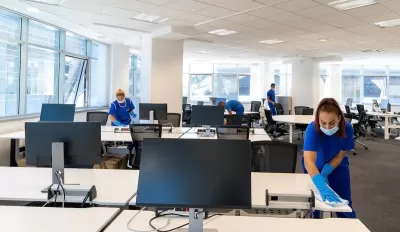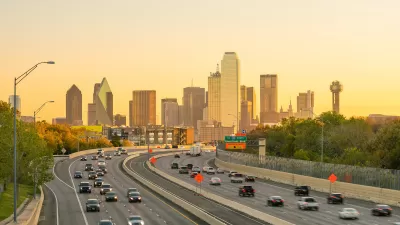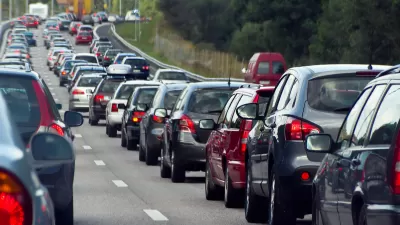The number of Americans who work from home rose sharply during the pandemic and remains high, posing important questions about the future of transportation and housing.

In a piece for Bloomberg CityLab, David Zipper outlines key ways that the rapid shift to remote work during and after the Covid-19 pandemic has altered U.S. cities.
Transit ridership has dropped and rush-hour gridlock has softened, while mid-day traffic has grown. Population patterns shifted as “Zoom towns” outside of major cities swelled with digital nomads who abandoned big-city business districts where highways and transit lines historically converge.
While some companies are taking a stricter stance on returning to the office, many workers are happy to keep working from home, making downtown offices largely obsolete. According to researcher Patricia Mokhtarian, who predicts that the remote work rate will continue to hover around 15 percent of U.S. workers, Covid has had a much longer-lasting impact on telework than prior disruptive events she’s studied, in part because new technologies allow more people to effectively do their jobs from outside the office.
Mokhtarian notes that while remote work can reduce vehicle miles traveled (VMT), its impacts on transit and air travel are less clear. “[I]t’s possible that people working from home are moving further outside the city. That can reduce transit use, and they might buy bigger homes that have more embedded carbon and require more energy to heat and cool.”
FULL STORY: Will Americans Ever Lose Their Taste for Telework?

Planetizen Federal Action Tracker
A weekly monitor of how Trump’s orders and actions are impacting planners and planning in America.

Congressman Proposes Bill to Rename DC Metro “Trump Train”
The Make Autorail Great Again Act would withhold federal funding to the system until the Washington Metropolitan Area Transit Authority (WMATA), rebrands as the Washington Metropolitan Authority for Greater Access (WMAGA).

The Simple Legislative Tool Transforming Vacant Downtowns
In California, Michigan and Georgia, an easy win is bringing dollars — and delight — back to city centers.

The States Losing Rural Delivery Rooms at an Alarming Pace
In some states, as few as 9% of rural hospitals still deliver babies. As a result, rising pre-term births, no adequate pre-term care and "harrowing" close calls are a growing reality.

The Small South Asian Republic Going all in on EVs
Thanks to one simple policy change less than five years ago, 65% of new cars in this Himalayan country are now electric.

DC Backpedals on Bike Lane Protection, Swaps Barriers for Paint
Citing aesthetic concerns, the city is removing the concrete barriers and flexposts that once separated Arizona Avenue cyclists from motor vehicles.
Urban Design for Planners 1: Software Tools
This six-course series explores essential urban design concepts using open source software and equips planners with the tools they need to participate fully in the urban design process.
Planning for Universal Design
Learn the tools for implementing Universal Design in planning regulations.
Smith Gee Studio
City of Charlotte
City of Camden Redevelopment Agency
City of Astoria
Transportation Research & Education Center (TREC) at Portland State University
US High Speed Rail Association
City of Camden Redevelopment Agency
Municipality of Princeton (NJ)





























